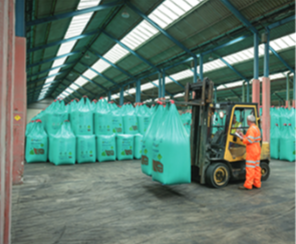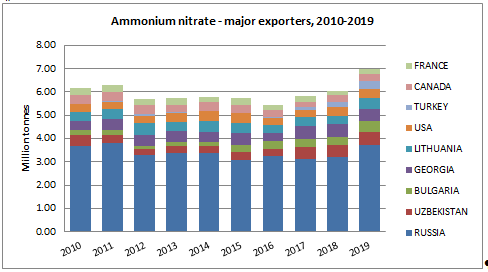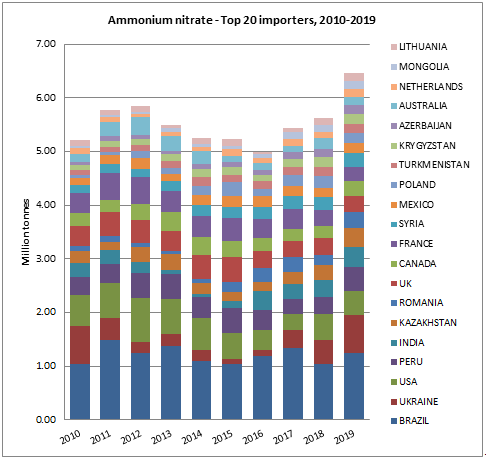
Ammonium Nitrate storage in ports – is it safe?
- By Gail Bradford
- •
- 10 Aug, 2020
The short answer is Yes. But
there are caveats

No doubt Port CEOs and Operations Officers worldwide will be examining procedures and stocks of certain goods as of now, if ever there was a greater need than now, to instil confidence in local communities and other stakeholders in the way in which dangerous goods and substances, today particularly ammonium nitrate, being stored in their ports is being managed.
The following explains the obligations and steps that every port authority and operator adheres to and follows - for the protection of everyone.
The movement of fertilisers in global trade is covered by a raft of internationally agreed regulations and legislation from the UN down to national government ministries and by the implementation of such by the port authorities and terminal operators themselves that are responsible for their storage and handling.[1]
In most ports in most countries the storage of fertilisers is guided by specific safety regulations. In the EU these safety regulations are laid out in Directives that have been adopted into Member States’ national legislation.
It starts with labelling of goods and products, whereby enterprises enter their products into the Globally Harmonised System of Classification and Labelling (the GHS). The GHS is a single worldwide system for classifying and communicating the hazardous properties of industrial and consumer chemicals. GHS sits alongside the UN ‘Transport of Dangerous Goods’ system.
A new Directive on the control of major accident hazards involving dangerous substances, known as Seveso III , was published on 24 July 2012 by the European Commission, ratified on 1 June 2015. The Seveso III Directive is implemented in Great Britain through the Control of Major Accident Hazards (COMAH) Regulations 2015 and through planning legislation which is the responsibility of the Department for Communities and Local Government (CLG) and the devolved administrations in Scotland and Wales.
- COMAH - Control of Major Accident Hazards Regulations 2015, usually refers to storage and distribution of chemical products including fertilisers.
- TASCC - Trade Assurance Scheme for Combinable Crops addresses the handling of grains, pulses and animal feed materials in the supply chain beyond the farm gate, whether the destination is storage, feed, food, seeds or other uses.
The responsibilities of the Competent Authority are laid down in the COMAH Regulations. There are two levels of COMAH site: Lower Tier sites, which hold a smaller hazardous inventory; and Upper Tier sites, which have larger hazardous inventories, and are considered to be more potentially hazardous. Operators of top-tier sites need to produce a safety report, which should be reviewed at least every five years. Ports would be classified as Upper Tier sites.
Ammonium nitrate essentially is an inert substance. The agricultural
industry has been using it as a fertiliser spread on our fields for
decades. The existence of the UN
regulations and national guidance, practiced in ports around the world, mitigates
the risks connected with its storage. The above relates to practices in the EU
and UK. Other countries will be party to
the GHS and implement their own versions of Seveso and TASCC/COMAH regulations.
International trade
Leading exporters include Russia with a 40% share of the market in 2019, followed by Uzbekistan (6%), Bulgaria, Georgia and Lithuania (all at 5% market shares). These major exporters were joined by Turkey in 2017.
Major importers include Brazil (13% of global imports in 2019), Ukraine (8%), USA (5%), Peru (5%), and India (4%).
Lebanon has imported on average just 5,000 tonnes a year over the last ten years. That would amount to just one or two shiploads. The explosion caused allegedly by poorly stored ammonium nitrate in Beirut last Tuesday related to imports destined for Mozambique. Imports by Mozambique have increased significantly over the time period, at cagr of 20%, to reach 100,000 tonnes in 2019. Mozambique’s imports are sourced principally from Russia and Turkey.
The UK imports between 300,000 and 450,000 tonnes of ammonium nitrate each year. It is handled at several major ports. In 2019 294,000 tonnes were imported (3% of global imports).



